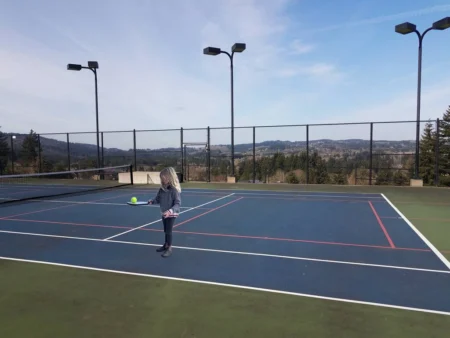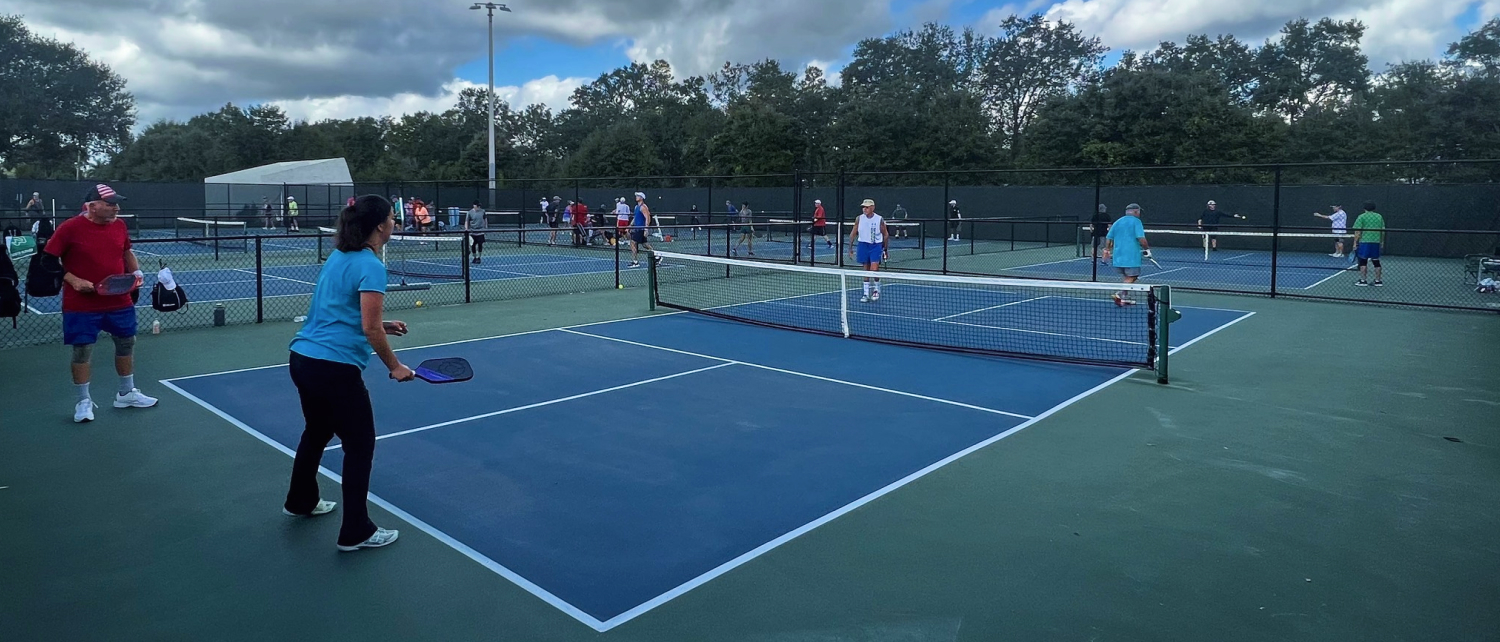Your cart is currently empty!

The world of sports is vast and varied, offering a myriad of games that challenge the body and mind in unique ways. Among these, one sport has begun to stand out as a particularly smart choice for young players: pickleball. This paddleball sport, which meshes elements of tennis, badminton, and table tennis, is more than just a pastime. It’s a gateway to numerous developmental benefits and, potentially, to educational opportunities as well.
Accessible and Inclusive
One of the most compelling reasons to teach children pickleball is its inclusivity. The sport can be played on any hard surface, indoors or out, and it requires just a paddle and a plastic ball with holes. It’s a game that’s easy to set up and even easier to learn, making it accessible to children of all ages and skill levels. The gentle learning curve ensures that kids can quickly feel a sense of achievement, which is crucial for fostering a continued interest in the sport.
Development Beyond the Court
On the pickleball court, children are not just learning a new sport—they’re developing important life skills. The nature of the game encourages players to think on their feet, make quick decisions, and develop strategic thinking. It’s a sport that requires players to be mindful of their movements and the space around them, which enhances their spatial awareness and coordination.
Furthermore, pickleball is inherently social. It’s often played in doubles, which means kids learn to work as a team, communicate effectively, and develop empathy as they interact with their partners and opponents. These are skills that will serve them well beyond the bounds of pickleball courts, extending into their personal lives and future professional environments.
Physical Health and Fitness
The physical benefits of pickleball cannot be overstated. It’s an excellent cardiovascular workout that can improve overall fitness. The sport involves a lot of movement—running, stretching, and striking—which can enhance hand-eye coordination and fine-tune motor skills. It’s also a low-impact sport, meaning it’s easy on the joints and suitable for children who may not thrive in more contact-heavy sports.
Educational and Cognitive Advantages
Pickleball also offers cognitive benefits. It can help improve children’s concentration and focus. The quick nature of the game means that players must keep their eyes on the ball and anticipate their opponent’s moves, which can lead to improved reaction times and decision-making skills.
There’s also the matter of strategy. Pickleball players must think critically about their play style and approach, deciding when to play offensively or defensively. These are higher-order thinking skills that are incredibly valuable in academic settings. Research has shown that children who engage in regular physical activity tend to perform better in school, and pickleball is an excellent way to keep kids moving.
The Road to Scholarships and Higher Education
Perhaps one of the most exciting prospects of introducing a child to pickleball is the potential for future educational opportunities. As the sport grows in popularity, there’s a chance that the NCAA will recognize pickleball as a collegiate sport. Should this occur, it would open up the possibility for scholarships, much like those available for other sports.
For families considering the long-term benefits, the prospect of a college scholarship can be a significant motivator. The ability to play pickleball at a competitive level could potentially ease the financial burden of higher education, while also providing a platform for young athletes to shine in a sport they love.
Preparing for the Future
While pickleball may not yet be an NCAA sport, it’s certainly on the radar of educational institutions. Schools are starting
to recognize the value of pickleball in promoting physical education and are beginning to include it in their curricula. By getting ahead of the curve and mastering the sport now, kids could be setting themselves up for future success in college-level athletics.
Community and Life Balance
Pickleball also promotes a sense of community. Many local parks, recreation centers, and schools are building pickleball courts, which become hubs of activity and interaction. In a digital age where screen time is high, pickleball offers a chance for kids to unplug, engage in physical activity, and connect with others in a meaningful way.
Incorporating pickleball into a child’s routine can help establish a healthy balance between sedentary activities and physical exercise. It’s a sport that can be played year-round and adapted to any schedule, making it an excellent option for busy families.
Mental Health and Emotional Well-being
The mental health benefits of pickleball are also noteworthy. Physical activity is known to reduce stress and anxiety, and pickleball’s fun and engaging nature makes it an excellent stress reliever. For children navigating the complexities of growing up, having an outlet like pickleball can be incredibly beneficial for their emotional well-being.
Gender Equality in Sports
Pickleball levels the playing field in terms of gender, as well. Boys and girls can play together, promoting gender equality and mutual respect from a young age. This co-ed aspect of the sport helps to break down gender barriers and stereotypes that are often associated with other sports.
Adapting to Changes in Sports Culture
As sports culture evolves, pickleball is well-positioned to become a mainstay in the athletic world. It’s a sport that requires minimal equipment investment, which makes it an economically smart choice for public education systems and families alike. As budget cuts affect physical education programs, pickleball offers a cost-effective solution that doesn’t skimp on the quality of physical education.
The Bigger Picture
Teaching children pickleball aligns with broader educational goals such as developing a well-rounded individual. It’s not just about playing a game; it’s about nurturing a child holistically. Pickleball can contribute to a child’s physical, cognitive, social, and emotional development, making it an all-encompassing educational tool.
Conclusion
In essence, pickleball is more than a sport—it’s an educational tool, a fitness regime, a community builder, and potentially, a pathway to higher education. As it continues to grow in popularity, the opportunities associated with pickleball are likely to expand, making it a wise choice for parents and educators alike.
By introducing children to pickleball, we’re not just teaching them a game; we’re equipping them with a set of skills and opportunities that can be leveraged throughout their lives. It’s a simple game with the potential for significant impact, and that’s why teaching kids pickleball is a smart play indeed.



